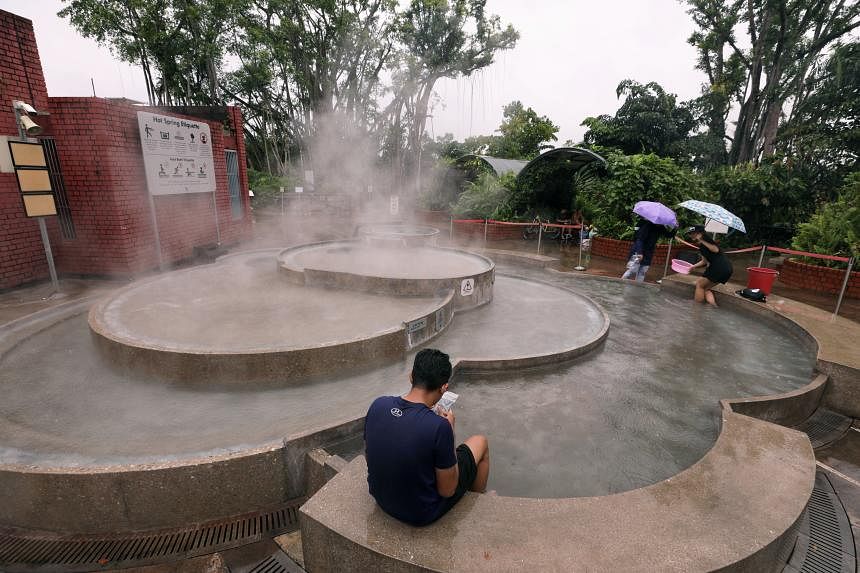SINGAPORE – A two-year $16 million nationwide study to determine Singapore’s geothermal potential for power generation will likely begin in the second half of 2024, the Energy Market Authority (EMA) told The Straits Times.
This comes as the Republic is considering all options to “green” its energy mix, with previous studies already indicating that places like Sembawang and Pulau Tekong could have some geothermal potential.
One of these studies was conducted in July 2023 by Nanyang Technological University (NTU), urban and infrastructural consultancy Surbana Jurong, and Tumcreate, the Technical University of Munich’s multidisciplinary research platform located in Singapore.
The study found that a site close to the Sembawang hot spring could have temperatures of up to 200 deg C – the temperature needed for power generation – at depths of 4km to 5km.
In September 2023, EMA called for proposals to conduct an islandwide, non-invasive study to assess the Republic’s geothermal potential at depths of up to 10km. The proposed regions to be surveyed would potentially include mainland Singapore, territorial waters and offshore islands.
The tender was awarded earlier in April to Surbana Jurong for $16 million.
When asked by ST for details on how the study will be conducted, the areas the company intends to survey and whether collaborations with NTU will continue, Surbana Jurong declined to respond.
However, EMA said the company’s proposed survey areas mainly encompass mainland Singapore, and it is estimated to commence in the second half of the year, subject to approvals from the relevant authorities.
Professor Alessandro Romagnoli from NTU’s School of Mechanical and Aerospace Engineering, who led the 2023 geothermal study in Sembawang, said that other regions worth studying include Pulau Tekong, western Singapore such as the Tuas area, and eastern Singapore.
Pulau Tekong is of interest as there is a known hot spring in its Unum region, the northern part of the island, whereas the western side of mainland Singapore has thick sedimentary layers that can act as a heat trap for heat from deep sources underground.
“Our near-surface temperature distribution map indicates elevated temperature zones in the western part of Singapore,” he added.
Eastern Singapore features a thin sedimentary layer over a potentially hot granitic basement, although confirming that a geothermal resource exists will require further exploration efforts.
Prof Romagnoli and his team have drilled around 1.7km at the site in Sembawang, collecting rock samples and measuring the temperature at various depths, which can help contribute various data points to the creation of an underground heat map for that area.
The team hopes to continue collaborations with Surbana Jurong.
In the meantime, the NTU team will continue drilling deeper at its Sembawang site, while extracting data that can be used to further validate the non-invasive geophysical survey that the company will be conducting.
“We also want to explore the options to demonstrate geothermal heat extraction and utilisation,” said Prof Romagnoli.
In October 2021, EMA said it was exploring the viability of employing geothermal systems in Singapore, following the development of new technologies.
One example includes the use of closed-loop heat extraction systems, which would require a far smaller surface area per unit of power produced, compared with other types of power plants, Prof Romagnoli previously told ST.
This works by having pipes installed underground in a loop, which would then transport fluids that transfer heat from the hot granite layers to the surface, where the heat could be used to generate electricity in the power plant.
Asked how a study on Singapore’s geothermal potential could be done in a non-invasive way, Prof Romagnoli said that surveys can be done to acquire gravity and magnetic data over a large region, which could help to delineate regions of interest.
This can then be complemented with seismic surveys, for instance, which use sound waves to capture images of the underground rock structures.
A total of nine companies submitted bids for EMA’s tender, six of which offered prices below $10 million. Asked why Surbana Jurong was chosen, EMA said that the company’s proposal was deemed to offer “the best value for money” among the submissions received which had met all the tender’s requirements.


